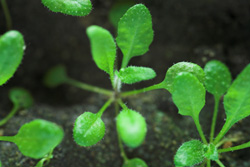Identifying genes affecting growth in Arabidopsis
The different traits found in natural plant populations can provide valuable information on genetic diversity for plant breeding. The NATURAL project studied growth rate in plants by using two populations of Arabidopsis. The research team identified the position on the chromosome of the genes that affected growth. Lines with near identical genes were developed for analysis of these sequences. The carbohydrate content of the leaves was studied to determine the relationship between this particular factor and growth rate. It appeared that growth was linked to the accumulation of transient starch. The rate of photosynthesis in a wide variety of ecotypes was studied; ecotypes being genetically unique populations, which have adapted to their local environment. The rate of photosynthesis appeared constant in different ecotypes, except for one that possessed herbicide resistance. This resistance was most likely induced by human intervention. Researchers investigated natural variation in Arabidopsis in order to reveal the genetic basis of accumulation of micronutrients, in the form of minerals. Antinutritional factors were also examined including phytate, the principle storage form of phosphorus in many plant tissues. The position of the genes responsible for the accumulation of phytate and phosphate, iron, zinc and other minerals was also identified. The loci of the genes affecting the accumulation of phytate appeared to be different to those which affected iron and zinc. This suggested that it was possible to breed Arabidopsis for increased mineral content without interfering with the accumulation of phytate. Researchers also observed that when the plant was stressed as a result of cold or salt conditions, growth was severely reduced. However, it appeared that reduction in growth was not as a result of altered carbohydrate metabolism.







